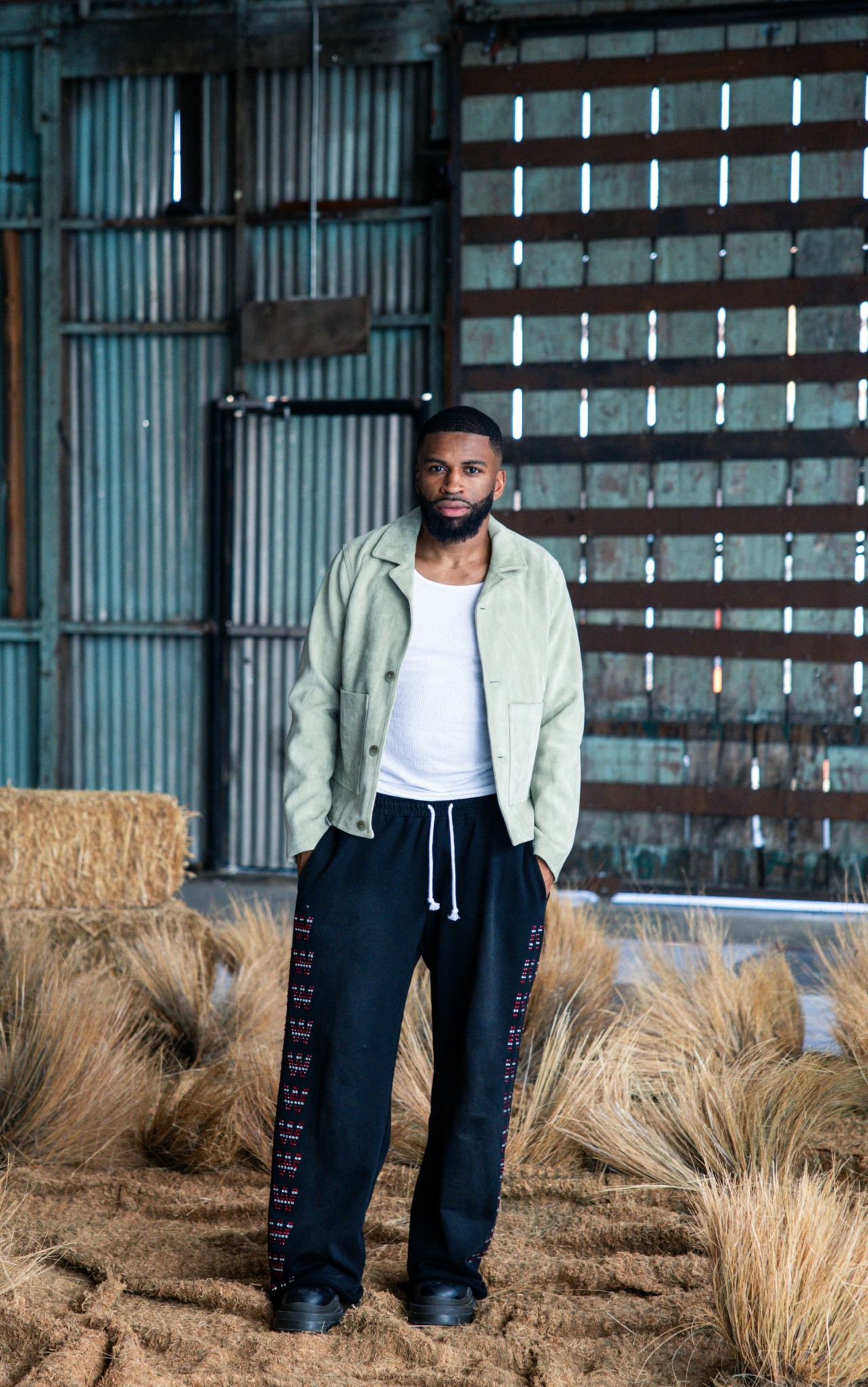We’re excited to introduce you to the always interesting and insightful Steve Murray Sesay. We hope you’ll enjoy our conversation with Steve below.
Steve, looking forward to hearing all of your stories today. f you needed to find a key partner or facility – how did you find them, what was the process of striking a deal like and what would you do differently knowing what you know now?
The best business deals I’ve ever made started with me not trying to make a deal at all.
Six years ago, I was running SMCA Creative Agency when a former intern reached out. I’d mentored him years earlier —connecting him with brand partnerships, sharing what I knew about the marketing and e-commerce industry, answering his endless questions about digital marketing. He was hungry to learn, and I believed in helping people who were willing to put in the work.
Fast forward to 2023, and that same intern had climbed the ranks and become a very well know artist manager in New York and had connections to many brand partners. He was now connected to a haircare brand called The Original Unbraider, and their CEO was looking for a digital marketing partner. He thought of me. One introduction later, I had what would become my anchor client, a bootstrapped start-up that I helped scale to a million dollars in revenue in just over a year.
But the real turning point came from something most people would’ve declined. The Original Unbraider’s CEO had a conflict and couldn’t attend the grand opening of a beauty supply retailer, an important distribution partner in their industry. She asked if I could go in her place, just to show support and represent the brand. No agenda. No pitch deck. Just show up, be present, and build goodwill.
I said yes.
Most agency owners would’ve said no. It wasn’t a “high-value” use of time. There was no immediate ROI. But I understood something that’s become the cornerstone of how I build partnerships: you lead with what you can do for someone else, not what they can do for you.
So I showed up at that grand opening. I networked authentically. I asked questions. I learned about the challenges beauty supply retailers were facing. I connected with founders who were navigating similar issues my clients dealt with every day.
And then I met her, Melissa Hibbert.
The President of the Beauty Founders Agency — an organization that supported startup founders across the beauty and personal care space. We talked about the brands she worked with, the gaps they were facing in digital marketing, and the struggle many of them had finding partners who understood their unique market positioning.
I didn’t pitch her. I didn’t ask for referrals. I just listened, shared insights where I could add value, and stayed in touch.
Within six months, she became my number one business referral partner. To date, she’s generated over six figures in annual revenue for SMCA, not because I chased her for deals, but because I showed up when it mattered, with no expectation of return.
Here’s what I learned:
1. Be in the right rooms with the right intentions.
Most people go to networking events, parties, and conferences trying to “turn up” or check a box. They’re not there to connect, they are there to collect. The grand opening wasn’t a networking event. It was a community moment. The people in that room were there to support, not extract. That’s the energy that attracts the right partnerships.
2. People can sense transactional intent from a mile away.
If you walk into a room only thinking about what you can get, people feel it. They pull back. They become guarded. But when you show up to genuinely support, serve, or learn? Doors open. Conversations deepen. Trust builds. And trust is the currency of real business relationships.
3. People are not permanently where you meet them.
That intern I mentored four years ago? He was just starting out. No influence. No network. No budget. But I helped him anyway. Not because of what he could do for me, but because he was hungry and deserving of guidance. Years later, he was the one who opened the door to a six-figure client relationship. You never know where people will end up. Treat everyone well, and they’ll remember when it counts.
4. Strategic generosity compounds.
Showing up for The Original Unbraider’s CEO, with no agenda, no ask, just support, positioned me in a room I never would’ve accessed otherwise. That one act of service created a domino effect: new relationships, referral partnerships, and revenue I could never have forced through cold outreach.
If I could do anything differently, I’d start doing this sooner. For years, I operated like most entrepreneurs — transactional, efficiency-obsessed, always calculating ROI. I would’ve skipped that grand opening in my earlier days because it didn’t fit neatly into a sales funnel.
But the truth is, the most valuable business relationships are built in moments that don’t look like business at all. They’re built in grand openings, mentorship conversations, and acts of service that have no guaranteed payoff.
So if you’re trying to find the right partners, vendors, or clients, stop hunting. Start serving. Show up where your community is. Lead with generosity. Treat people well long before they’re in a position to return the favor.
The right rooms will open. The right people will remember and the deals aligned with your vision will come, not because you chased them, but because you earned them.

Steve, before we move on to more of these sorts of questions, can you take some time to bring our readers up to speed on you and what you do?
How I Got Started
But my path here wasn’t traditional. I didn’t come from a marketing dynasty or start with venture capital backing. I never worked at an agency or climbed the corporate ladder. I built SMCA from the ground up by being in the right rooms, treating people well, and understanding that in this industry, relationships compound faster than advertising budgets.
I was studying graphic design and storytelling, fascinated by how brands connect with audiences and how creative strategy could drive real business outcomes. But my first real opportunity came from an unexpected place.
I was playing college football at Lamar University in Beaumont when I broke my elbow during my senior year, a season-ending injury. Around that time, the CEO of Education First Federal Credit Union, a stadium sponsor, asked if I wanted a job in their marketing department.
My first week on the job, I helped develop a BOGO campaign that took a fashion retail concept and applied it to loan products. That campaign generated $4.5 million in revenue in 30 days. That moment validated everything I believed about marketing: great strategy isn’t about following industry norms, it’s about understanding human behavior and applying creative ideas from unexpected places. Why shouldn’t financial products borrow strategies from fashion? Turns out, they should.
After completing my MBA, I transitioned into entertainment marketing and became the Marketing Manager at the Laugh Factory in Hollywood, one of the most iconic comedy venues in the world. Three months later, I was fired.
But here’s the thing about getting fired: sometimes it’s the catalyst you need. They rehired me as a consultant, and the Laugh Factory became my first client. That forced pivot taught me the difference between being an employee and being a business owner. As a consultant, I wasn’t just executing, I was responsible for results, strategy, and building relationships that actually mattered.
From there, my consulting work expanded into the music and entertainment industry. I went on to work with Snoop Dogg, The Game, NLE Choppa, Xbox, Sony, and Sega, managing campaigns, brand partnerships, and marketing strategies for some of the biggest names and brands in entertainment and gaming.
But while working with major artists and Fortune 500 companies, I noticed something: there was a massive gap between what I knew and what small businesses, especially DTC founders – had access to.
The founders I met at events, through mutual connections, and in my network were brilliant. They had incredible products, compelling brand stories, and the work ethic to build something real. But they didn’t have the marketing infrastructure, strategic frameworks, or industry knowledge that the major brands I worked with took for granted.
They were trying to figure out Facebook Ads on YouTube. Hiring agencies that didn’t understand their business. Burning cash on strategies that worked for enterprise brands but failed for startups. I realized I could bridge that gap.
So I founded SMCA Creative Agency, not to work with the Fortune 500 brands I already had access to, but to bring that same level of strategic thinking, creative execution, and marketing expertise to the founders who needed it most.
That’s what drives me. I’ve seen what’s possible when you combine the right strategy with the right execution. I’ve delivered results at the highest levels of entertainment and corporate marketing. And now, I’m focused on making sure DTC founders, especially in beauty, fashion, and lifestyle — have access to that same caliber of work.

Any resources you can share with us that might be helpful to other creatives?
A list of conferences that had vetted professionals.

Can you tell us about what’s worked well for you in terms of growing your clientele?
Concentrating on what matters, and improving my business infrastructure to provide better service
Contact Info:
- Website: https://smcacreative.com
- Instagram: https://instagram.com/stevemurray2
- Youtube: https://www.youtube.com/@stevemurray2




